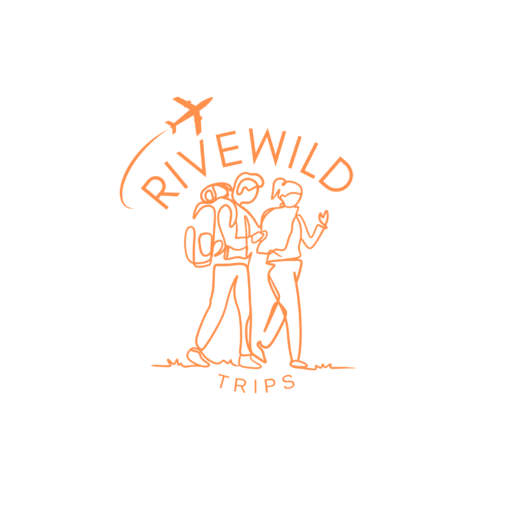When I began reading about my next destination, Vietnam, I discovered a place in the north near the Chinese border that immediately caught my attention: Hà Giang. This region is known for breathtaking mountain passes that lead to remote towns and small villages, all surrounded by rivers and dense jungles.
After a seven-hour daytime bus ride from Hanoi, we arrived in Hà Giang.
Our first impression was exactly what we’d hoped for—a journey back in time, where we encountered some of Vietnam’s most rugged and majestic landscapes.

The best way to explore the province, as many advised, was a motorbike loop that begins and ends in Hà Giang.
After a quick check-in at our beautiful guest house, about a ten-minute walk from the center, we asked a staff member in the lobby if we could rent a motorbike there. To our surprise, he informed us that all his bikes were already rented, so we had to find another solution. Fortunately, we found a nearby hostel where a very polite Vietnamese lady welcomed us with a cup of tea.

We finally found our perfect travel companion: a fantastic four-gear, semi-automatic Honda Blade, which generously offered its rugged saddle for our next four-day adventure.
After a quick tour around the city, we met an Italian friend who, after a trip to Hà Giang, found love here and opened a pizzeria, the only one in the area. It’s a great spot to take a break from Vietnamese food, relax with a beer, and enjoy the outdoor tables.
After a nice chat and some helpful advice, we returned to the guesthouse to recharge and prepare for the next morning.
Day 1: Hà Giang City to Yên Minh
Heading north on the QL4C, we soon reached the Dong Van Karst Plateau, a UNESCO Global Geopark. The highlight of this part of the journey was the Heaven’s Gate Pass, where we encountered our first tight curves. Cruising down, we reached the town of Tam Son, surrounded by scenic hills. After a quick lunch, refreshing drink, and a break from the saddle, we were back on track. The road followed the beautiful Mien River, winding through canyons and karst plateaus until we finally arrived in Yên Minh.

Day 2: Yên Minh to Đồng Văn
After a hearty breakfast and a flavourful cup of tea, we headed northeast on the QL4C, taking in the breathtaking scenery with each mile. We reached the Nine-Turn Pass (Dốc Chín Khoanh), where we had to stop and admire the stunning view of the valley ahead. Back on the road, we eventually arrived at our destination for the day, Đồng Văn. We were lucky to catch a very traditional local market, filled with vibrant dresses and bustling with energy. We strolled around for about an hour before settling into our guesthouse for the night, enjoying a quick dinner, a wonderful chat with the owner, and then falling into bed exhausted.

Day 3: Đồng Văn and Mã Pí Lèng Pass
This leg of the journey was, without a doubt, the most beautiful part of the entire road trip for us. A stunning display of natural beauty that only Mother Nature can offer, and certainly the most photogenic stretch.
We passed through towering peaks, deep valleys, canyons, and rolling hills, winding through countless curves until we arrived in Mèo Vạc. Here, we had an unforgettable lunch experience: a warm local family, drawn by our foreign faces, invited us into their home and offered to prepare a traditional meal. They welcomed us with the strongest ginger tea we had ever tasted, and we enjoyed a fun conversation with the help of Google Translate. After reluctantly bidding farewell to the family, we continued along the Nho Quế River, finishing the remarkable day in the small town of Báo Lâm before heading back toward Hà Giang the following morning.

Day 4: Back to Hà Giang City
After breakfast, we took the QL34 southwest toward Hà Giang. The valley roads offered us a relaxing drive, with scenic views of the Gâm River for much of the way, making for one of the most enjoyable stretches of the past three days. We skipped lunch, too caught up in the beauty of the road, eager to reach Hà Giang—a bit worn from the hard saddle and the uncomfortable bed in the previous night’s hostel (no big deal, though). Back in the city, we returned our faithful motorbike to the hostel, grateful it had never let us down, and enjoyed a relaxing evening exploring the city before hopping on an overnight bus back to Hanoi.
As the bus pulled away, I found myself gazing out the window, reflecting on the experiences of the past four days. I can honestly say this was one of the best experiences of my entire trip in Vietnam—the most remote and untouched places, far from the cities, close to minority villages that feel like a step back in time. Here, technology hasn’t impacted daily life, and family happiness, rooted in simplicity, is what truly matters. I’ll remember it forever.

TIPS
Book your accommodations in advance. You’ll be passing through small, remote villages with limited options, which fill up quickly during peak season.
Carry cash, as ATMs are scarce, especially in the villages..
Check it Out also: Angkor Wat: The Ultimate Guide to Siem Reap’s Treasure






